by E.G. Anglo, Ph.D.
First published in the Philippine Star (Part I: 15 September 2005 and Part II: 22 September 2005). Posted with permission from the author.
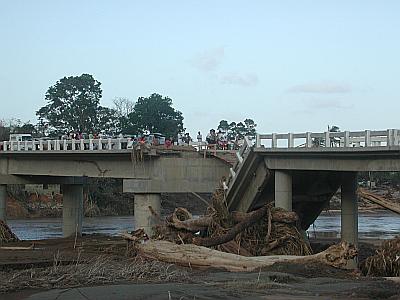
Was it global warming? When Hurricane Katrina devastated Louisiana and Mississippi last week, many observers were quick to cite the disaster as evidence that accumulating greenhouse gases were causing tropical cyclones to get stronger. Such proof would hardly be news to Dr. Kerry Emanuel of the Massachusetts Institute of Technology, who recently put forward the connection in an article published in the August 2005 edition of the prestigious science journal Nature. By his calculations, climate change has caused hurricanes in the Atlantic to become twice as destructive as they were 30 years ago. Over the Western Pacific where the Philippines lies, the intensification is about 75 percent. After our own experiences with two major disturbances in November 2004, Dr. Emanuel’s article didn’t need validation.
Not so fast, says a team of scientists headed by Roger A. Pielke Jr. of the University of Colorado, whose results are to appear in the Bulletin of the American Meteorological Society. Disputing Emanuel’s claims, this article essentially reiterates the conclusions of a 2001 review for the Intergovernmental Panel for Climate Change (IPCC) by a meteorology Dream Team that included Emanuel himself. Pielke and his group maintains that while there may be theoretical basis for suspecting that greenhouse warming can bring about stronger typhoons, the empirical evidence is just too weak, and that our understanding of the physics of tropical cyclones is too rudimentary to make any such conclusions. Dr. William Gray of the Colorado State University, arguably the biggest name in that Dream Team, also notes that it is impossible to distinguish between what is happening today from the natural variability that tropical cyclones have historically displayed. Present Atlantic hurricanes are strong because the basin is in a period of high activity that was last recorded around the 1920’s well before the first smoke-belching jeepney took to the road.
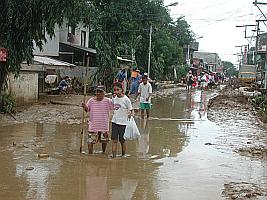
What do these two clashing articles mean to the Philippines, which typically runs out of letters of the alphabet to name its typhoons with? What do we know about climate change and its connection to tropical cyclones?
The theory behind Emanuel’s prediction boils down to a few basic facts. First, tropical cyclones get their energy from heat released by large-scale condensation of water vapor, which finds an unlimited supply in the ocean. Second, the warmer the ocean, the more water vapor it releases. Indicative of the importance of sea surface temperatures is the observation that hurricanes almost never form during winter and strike only the lower half of the continental United States facing the tropics. The Pacific Ocean, which is warmer than the Atlantic, has a longer typhoon season and a larger area for tropical cyclone formation.
What Emanuel constructed was a “destructiveness index” based on the recorded maximum velocities of tropical cyclones in the Atlantic and western Pacific. When he plotted the values of this index for each basin over the past 30 years, he found a clear and striking increase over the period. More important, the graphs mimic the rise in sea surface temperatures in each basin. Results like this have changed the minds of the many undecided in the scientific community, including former skeptics such as Emanuel himself.
Yet many choose to remain cautious, particularly among those who find Emanuel’s thermodynamic approach too simple to model a system like the atmosphere. The objections of Pielke’s team is premised on the fact that other metrics of tropical cyclone behavior do not show dramatic changes over the decades that could be attributed to greenhouse warming. For instance, the rise in mean global sea surface temperatures do not appear to have caused a similar increase in frequency over the decades as the theory might predict. Hurricane Katrina crossed the city of New Orleans to become the most destructive of cyclones to hit the U.S. in a hundred years, but it was not particularly strong. Last year’s Winnie, which struck Northern Luzon, was only a depression.
One reason is that while a warm ocean is critical to typhoon formation, this factor influences only the first few hundred meters of a towering mass of vapor that can be twenty kilometers tall. Another crucial requirement is the temperature profile of the atmosphere, which must be unstable enough for vapor-laden air masses to rise to the upper atmosphere where they can cool down, condense and release their energy. The wind profile along the entire column must also be fairly uniform, or else the circulation will never get organized. Unlike the heating of the sea surface, it is not clear how global warming will influence these factors.
Since there is no way to test the connection between global warming and tropical cyclones in the laboratory, climate scientists can only do so in virtual reality. Using world’s fastest computers to simulate the entire atmosphere-ocean system, research teams from around the globe can test the consequences of scenarios resulting from the doubling of CO2 levels. But even starting from virtually identical assumptions, different global climate models yield frustratingly disparate outputs. Their estimates of typhoon intensification range from 5 to 20 percent; others find no significant change.
One key shortcoming of these models is resolution, which defines how finely the atmosphere can be represented in a model. Even models that run on the most powerful computers are unable to adequately resolve the features of the atmosphere smaller than a kilometer, let alone clouds, a cyclone’s most important feature. As a result, the forecasts remain imperfect. Since improving resolution demands more processing power, understandably any new advance in high-speed computing is quickly recruited for climate modeling.
For now the race to improve resolution postpones the question of whether we really know enough about the science of weather phenomena to make good forecasts with. After all, computer models only solve the arcane equations expressing the laws of geophysics that we know of. Many of the fundamental theories of fluid motion were discovered in the 19th century, while processes involved in clouds, friction and turbulence are still understood through statistical relationships and not as “true” scientific laws. Among many theorists there is therefore an impression that if weather prediction is to meet the heightened demands of modern society, what must take place is a scientific revolution of the magnitude that gave rise to the theory of relativity.
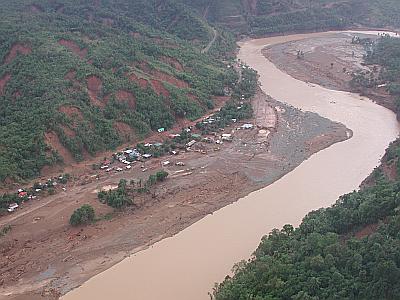
While meteorology awaits its Einstein, the world must rely on climatologists sifting through data to separate natural periodic signals from unusual trends that can be identified as anthropogenic in origin. Locally one such trend is an increase in the number of named disturbances that entered the so-called Philippine Area of Responsibility during the 1990s. However, the period from the 60’s to the 70’s appears to be just as active as the recent, so such a rising trend cannot be taken definite. It is also difficult to discount the possibility that any observable escalation may be due to improvements in our ability to track tropical cyclones.
The varying quality of data and the dearth of good historical measurements afflict most attempts to document changes over the decades. The Manila Observatory has kept local meteorological records since it was established in 1865, but like other weather agencies of old its observations are limited to those cyclones that approach land. Maritime logs of disturbances are available even earlier, but it’s hard to trust the account of ship captains trying not to be around a typhoon when it appears.
Better data came to the Philippines when as a colony and later host of its bases the U.S. made regular aircraft reconnaissance of disturbances in the Pacific. But worldwide the capacity to monitor hurricanes and typhoons only reached its present level with the advent of the satellite era in the early 70’s. It is for this reason that Emanuel limited his analysis to the last 30 years, and even then he had to resort to some data tweaking in order to allow comparability among the decades. Such shortcomings in the data inevitably foster doubt in any research that relies on them.
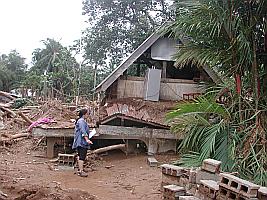
There are however a few points that are not in dispute. One thing the two papers agree on is that the planet is warming up. Also not in dispute is the increase in the number of strong cyclones in the recent years. The disagreement is only whether the two phenomena can be linked to human activity. Pielke’s paper also does not discourage taking action against climate change, and warns only that justifying climate change mitigation based on faulty science will be counterproductive and ineffective. This position is sympathetic to the Bush administration, which believes that the scientific uncertainty and the massive costs of reducing its CO2 emissions do not justify the actions chosen by the rest of the world in the Kyoto Protocol. This uncertainty also is shared by an ever-narrowing circle of reputable climate scientists with reservations over global warming but who seem to be influential in the White House.
That Emanuel’s critics include the powerful raises eyebrows over the timing of the release of the Pielke paper to come right after his, as if aimed at dampening its impact. Emanuel is quick to dismiss this conspiracy. Here’s a scoop: he was supposed to be among the co-authors of the Pielke article, but withdrew when results of his separate study contradicted the team’s conservative conclusions. The reality is that many scientists who believe in humankind’s role in changing the climate are often skeptical of any specific claims about our ability to influence tropical cyclones. Experienced professional forecasters familiar with how unpredictable and complex typhoons can be tend to be among them.
What seems to be missing from the skeptics is a clear statement on how strong a change or what kind of signal they require before they start believing that fossil fuel burning leads to stronger disturbances. Emanuel’s paper showed a doubling in the strength of Atlantic hurricanes; none of his critics state how much strengthening is needed before they start agreeing that what we are observing goes beyond natural variability. Will a Category 5 hurricane (the strongest class in the U.S. system) in January be sufficient evidence? A hurricane in New York City, or a Category 6?
The science is uncertain, but as activists remind us, the uncertainty should not be an excuse for inaction. In the opinion of many governments who have decided to join the effort to curb greenhouse gas emissions, it may be too late to do anything by the time definite signs appear. When they do, there is no doubt that these signs will not be pleasant, as the aftermath of Hurricane Katrina reminds the world.
Clarifying the connection between global warming and tropical cyclones is critical to disaster management in the Philippines not just because the record-setting number of weather disturbances that affect us every year puts to shame the few but well-televised calamities that plague the U.S. It is also because as ominous as the possibility of suffering too many typhoons is the prospect of droughts caused by too few. Either scenario cannot be ruled out as global warming progresses. If no such link exists, we may be spared from some of its future effects and allow us to focus on our many urgent problems.
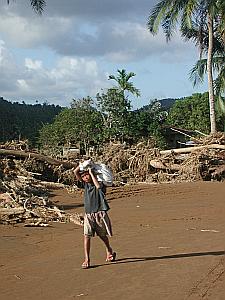
Although there is uncertainty in how much the frequency and intensity of tropical cyclones will be altered by climate change, this risk is still only part of the issue. The Pielke review devotes its second half to the problem of vulnerability of U.S. cities, specifically on how humans have placed themselves in harm’s way. Stop worrying about the connection between CO2 emissions and Katrina, the authors say, because any damage that climate change can inflict via stronger tropical cyclones will be miniscule compared to the increased vulnerability to disasters arising from the building of homes in unstable mountainsides, coastal floodplains and natural drainage channels. Few in the Philippines dispute the wisdom of this warning, but it has long been raised — and ignored. As Hurricane Katrina and Supertyphoon Yoyong show us, our countries have something deadly in common.
The author is an associate professor of the Department of Physics of the Ateneo de Manila University and the head of the Regional Climate Systems Program of the Manila Observatory.
All photos on this page courtesy of John Ong (for Oxfam).
